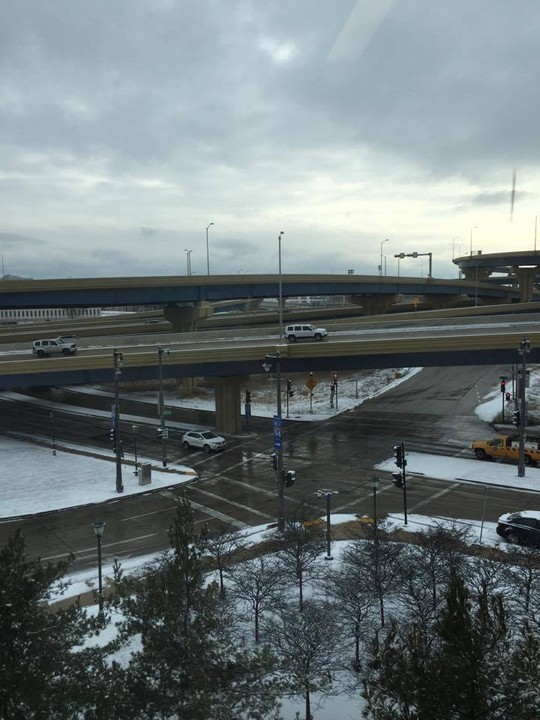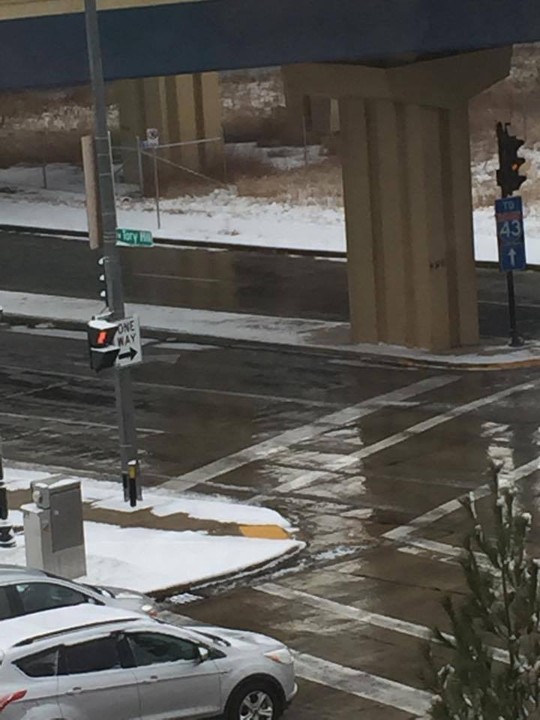Tory Hill
Introduction
Text-to-speech Audio
Images
The Marquette Interstate connecting Interstate 94 and 43. Photo by Brigid Nannenhorn

W. Tory Hill between N. 10th and N. 11th Streets. Photo by Brigid Nannenhorn

Backstory and Context
Text-to-speech Audio
Tory Hill neighborhood in southeastern Milwaukee virtually disappeared in 1964 with the construction of the Marquette Interchange situated between Interstate 94 and 43. Wisconsin’s largest single construction project required the razing of over 500 buildings within the thirty-five acre area.1 While some Milwaukee citizens praised the Interstate for its added transportation convenience, others argued the city had lost a part of its soul.2
Tory Hill emerged in the 1840s as a primarily Irish community during the height of Irish immigration to the United States. The neighborhood stretched from N. 4th Street to N. 13th St in the area between W. Michigan St. and the railroad tracks south of St. Paul Avenue.3 The hill sloping down to the Menomonee River Valley gave Tory Hill the second part of its name. The first part of the name originates from a derogatory name given to the Irish by the English in the 16th and 17th centuries. The word Tory derived from the Irish word “toraidhe” meaning robber, an English insult referring to the Irish as bandits.4 In 1847 the Milwaukee Archdiocese decided the neighborhood needed a church for its large Catholic population. Two years later, St. Gall’s Catholic Church was completed on N. 2nd and Sycamore (Michigan St.). Residents also attended Gesu Church on 12th Street and Grand Avenue (now Wisconsin Avenue).
At the end of the nineteenth century, Tory Hill saw a rise in stockyards and packinghouses due to the booming railroad industry. The primarily working-class neighborhood lived amongst smoke and soot. The crime rate was high and alcoholism was widespread. Residents of the Third Ward, another predominantly Irish neighborhood, began moving into Tory Hill following the destructive fire of October 28, 1892 that left 1,900 homeless.5 Yet by the turn of the twentieth century, the Irish population in the neighborhood fell as German and Eastern European immigrants began to move into the area.6 Famous residents of Tory Hill include Hollywood actor Pat O’Brien (1899-1983) and Medal of Honor recipient Thomas Toohey, recognized for his heroism during the Civil War.7
Sources
2. Carl Baehr, “Yes, Tory Hill Is a Street,” Urban Milwuakee, January 14, 2016, https://urbanmilwaukee.com/2016/01/14/city-streets-yes-tory-hill-is-a-street/.
3. Ibid.
4. Ibid.
5. Chris Foran, “Finding Milwaukee’s Irish heart,” Milwaukee Journal Sentinel, March 15, 2012, http://archive.jsonline.com/entertainment/finding-milwaukees-irish-heart-294h1vn-142787125.html.
6. John Gurda, The Making of Milwaukee (Milwaukee: Milwaukee County Historical Society, 1999)
7.Carl Baehr, “Yes, Tory Hill Is a Street,” Urban Milwuakee, January 14, 2016, https://urbanmilwaukee.com/2016/01/14/city-streets-yes-tory-hill-is-a-street/.
